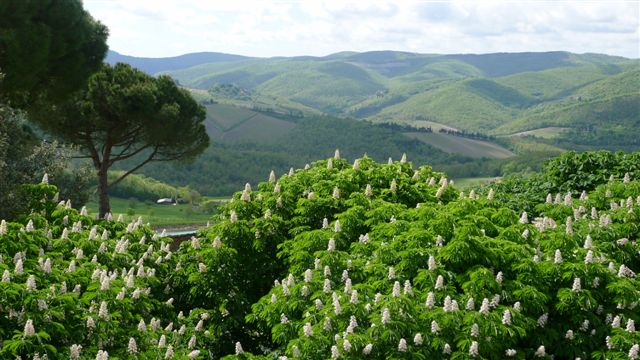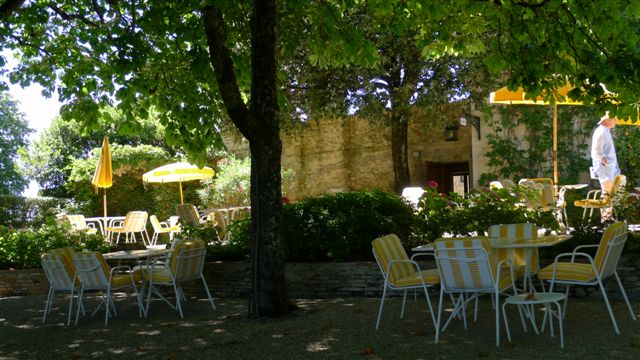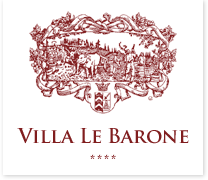
With autumn comes the time of horse chestnuts and sweet chestnuts in Tuscany. In our charm hotel, Villa le Barone, we have horse chestnut trees with beautiful white flowers blooming in spring.
In autumn their leaves as well as the horse chestnuts, released from their external casings, fall on the terrace with Artim, our gardener, picking them up every morning…
The flowers of the sweet chestnuts trees are less beautiful than those of horse chestnut trees, but their fruits are edible and delicious! The sweet chestnut is a tree that is found in most of the forests of Tuscany. Close to Villa le Barone, at Lucolena, also on the county of Greve in Chianti, the “chestnut festival” takes place every year in late October. It provides the opportunity to taste wonderful local products. Also in our Fattoria (Farm) of Vecchienna and around our Podere (Farmhouse) San Giuseppe in Maremma, there are forests with chestnut trees and delicious chestnuts that people pick up during their hikes!
Sweet chestnuts have been for centuries the staple food of people residing on the Tuscan hills and that is why the chestnut was called “bread tree”. How many delicious dishes made with sweet chestnuts! They can be boiled, roasted, steamed and one can make flour out of them. Of course the wonderful traditional dish is the “Castagnaccio”, very easy to do: just mix the chestnut flour with a little water and milk until it forms a liquid paste, add 3 or 4 tablespoons of olive oil, a few raisins, mix well, pour the dough into a greased round cake tin, decorate with pine nuts and a few rosemary leaves, and bake at 180° for 45 minutes. But there are so many other cake recipes that can be done with the chestnut flour! And what’s better than roasted chestnuts on an open wood fire? And then there is also the chestnut honey, a dark honey, that one can choose for breakfast at Villa le Barone!

Furthermore, the sweet chestnut tree wood has also allowed for the development of many traditional activities and the manufacturing of various objects such as baskets, fences, poles, barrels and specially roof beams. Why? Because one of the qualities of chestnut wood, a very hard wood, is that it does not rot. And finally, even the chestnut leaves are popular to flavor and pack some of the Italian sheep cheeses.
Spring and autumn are beautiful in Tuscany: Staying at the boutique hotel Villa le Barone, you will be able admire the horse chestnut trees blossoms in spring, to enjoy the “castagnaccio” in autumn while sleeping in a room with old chestnut beams holding the roof!
